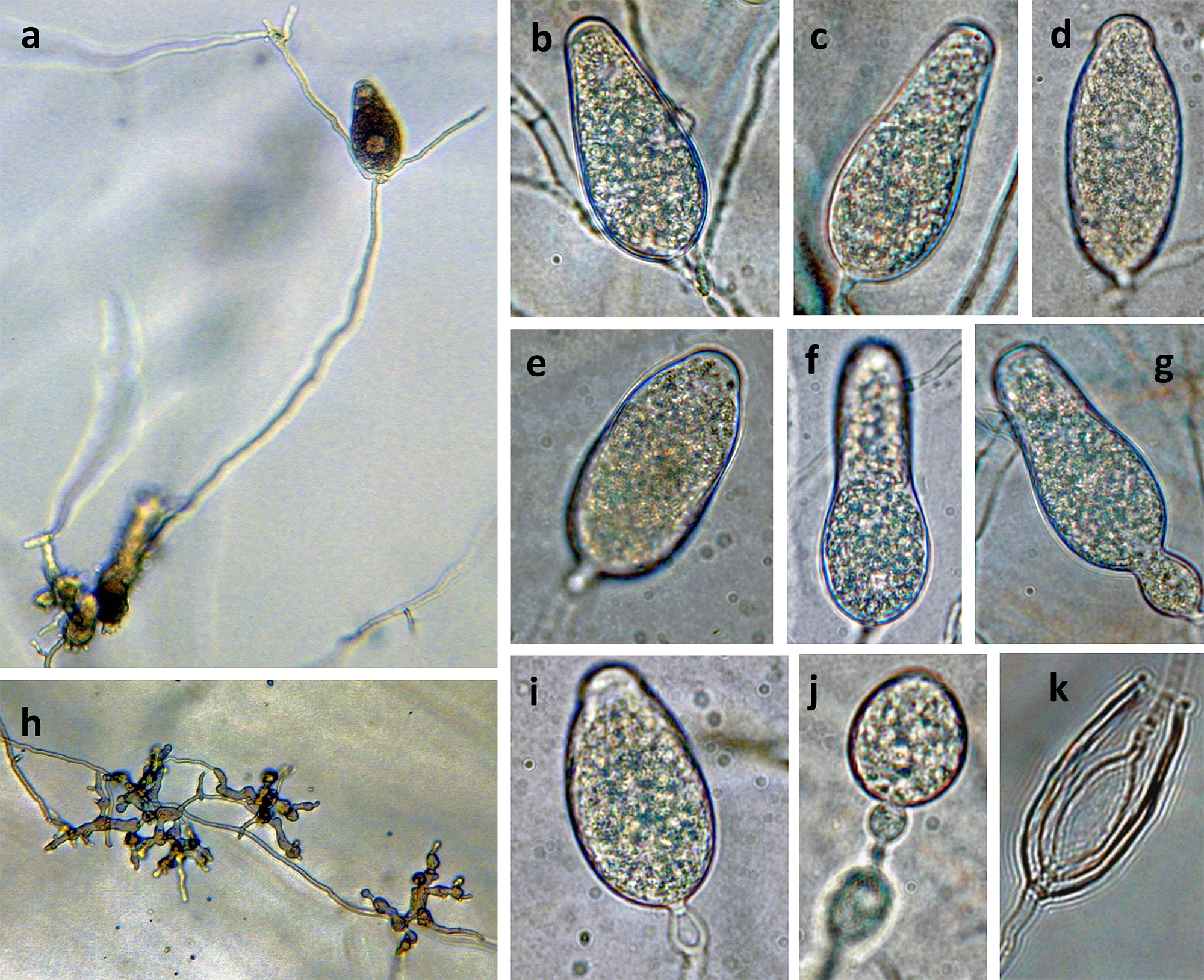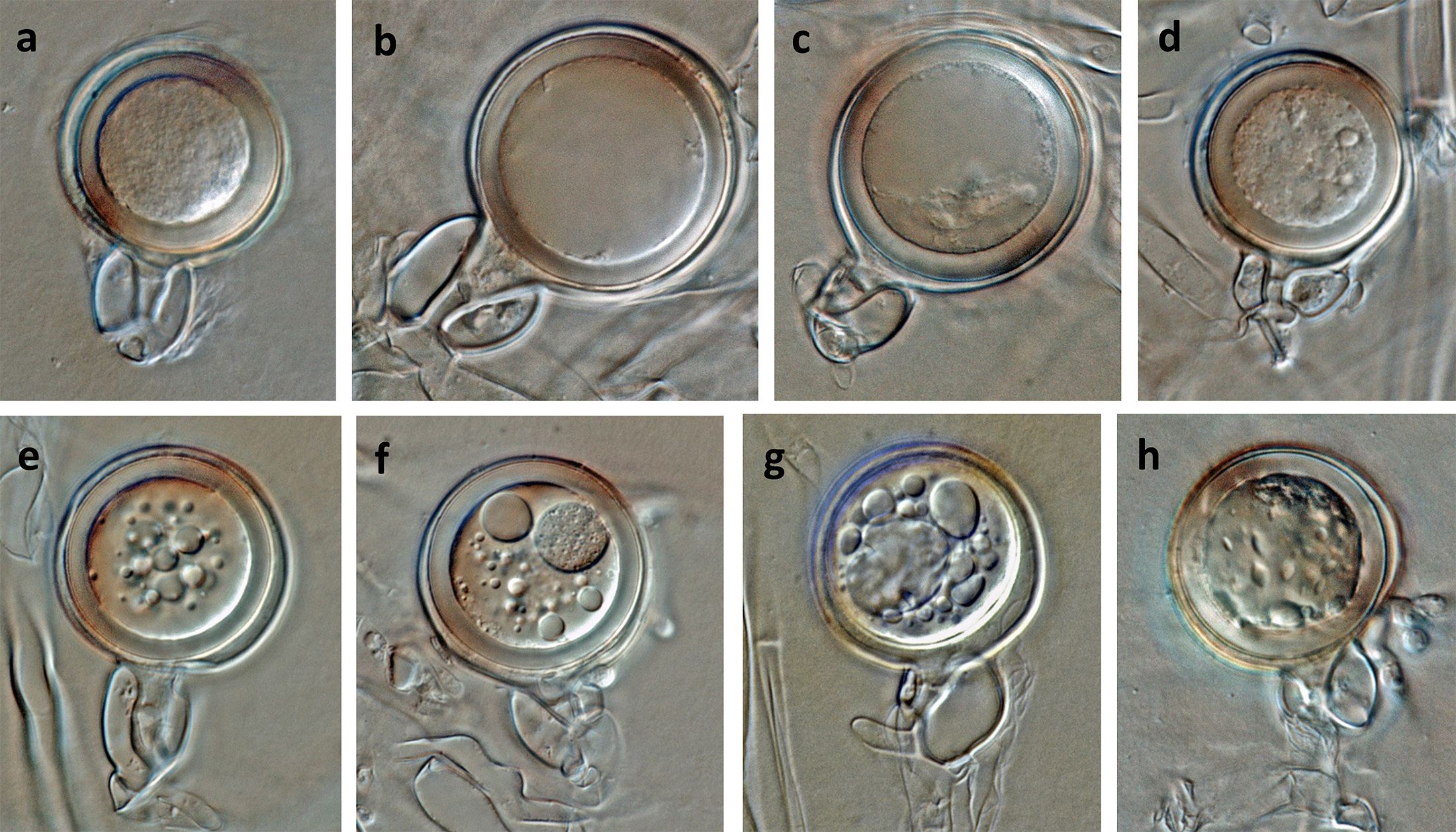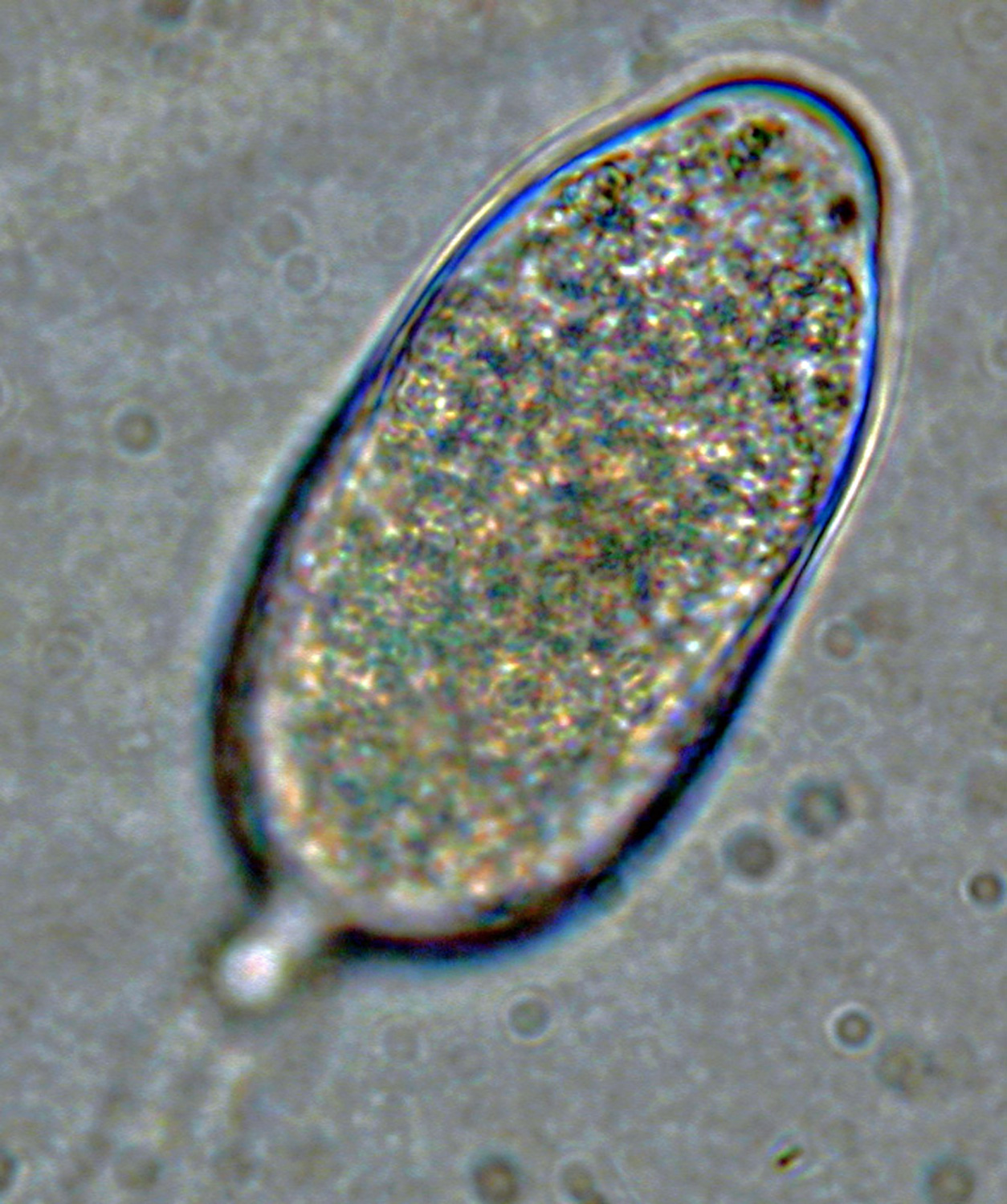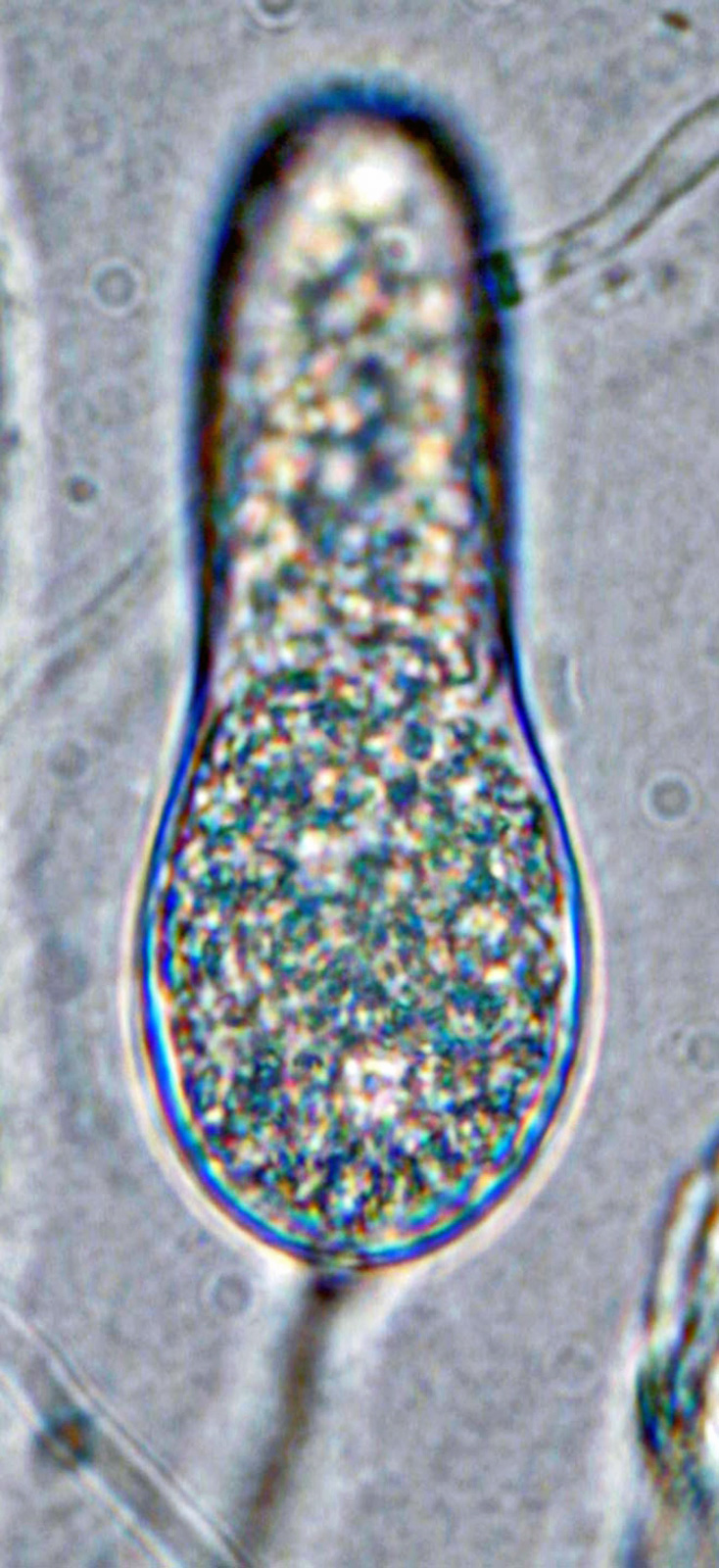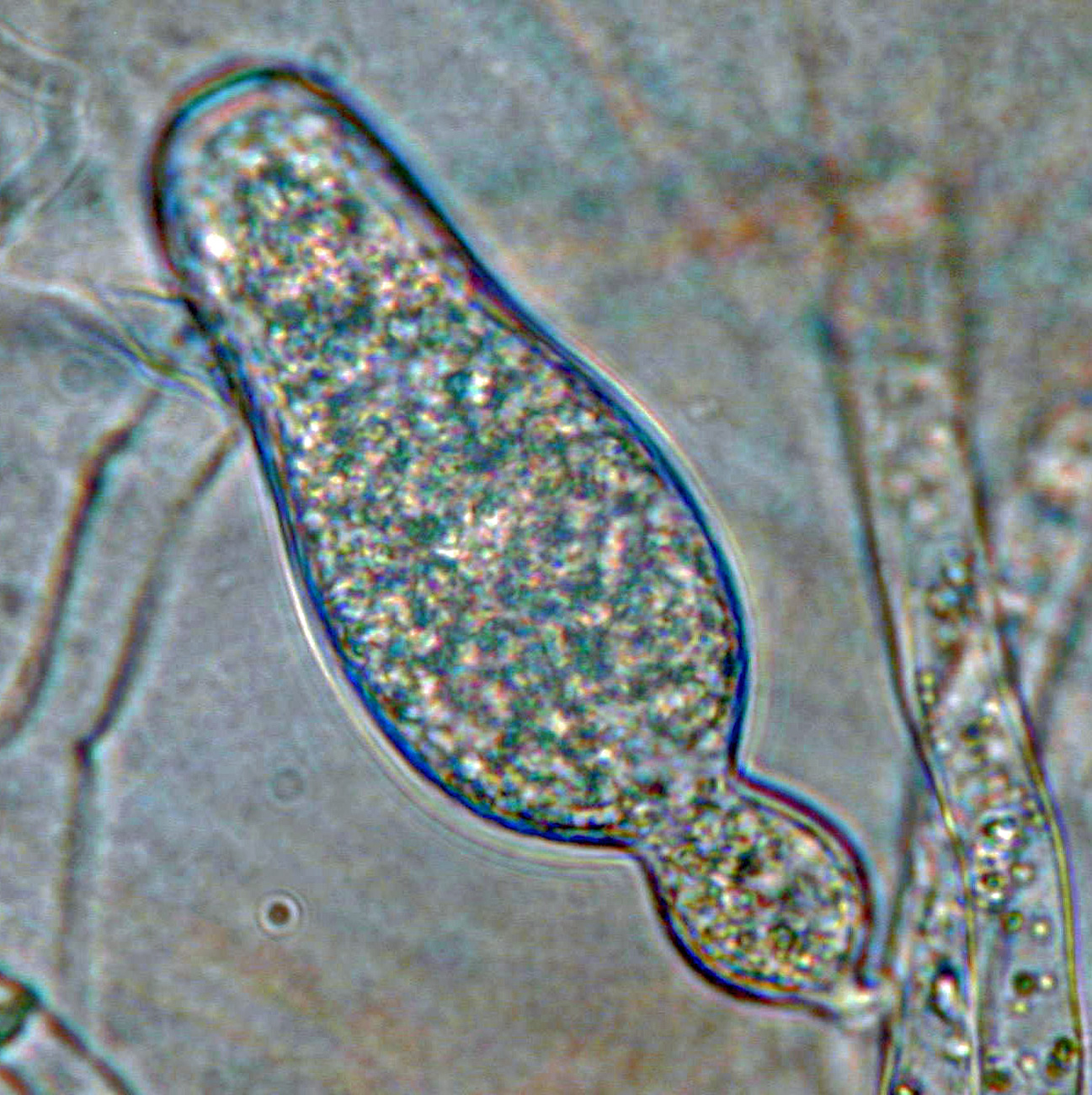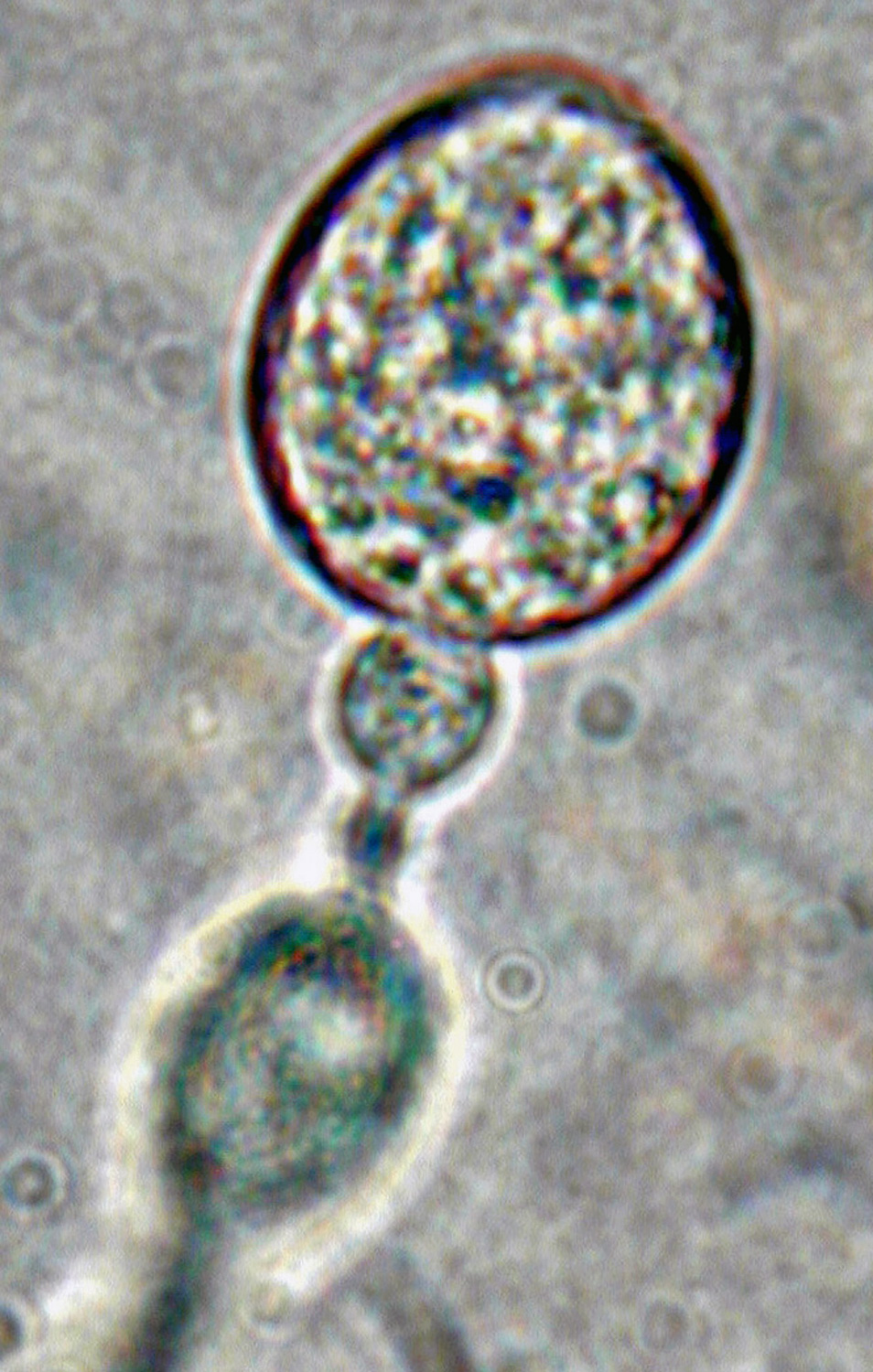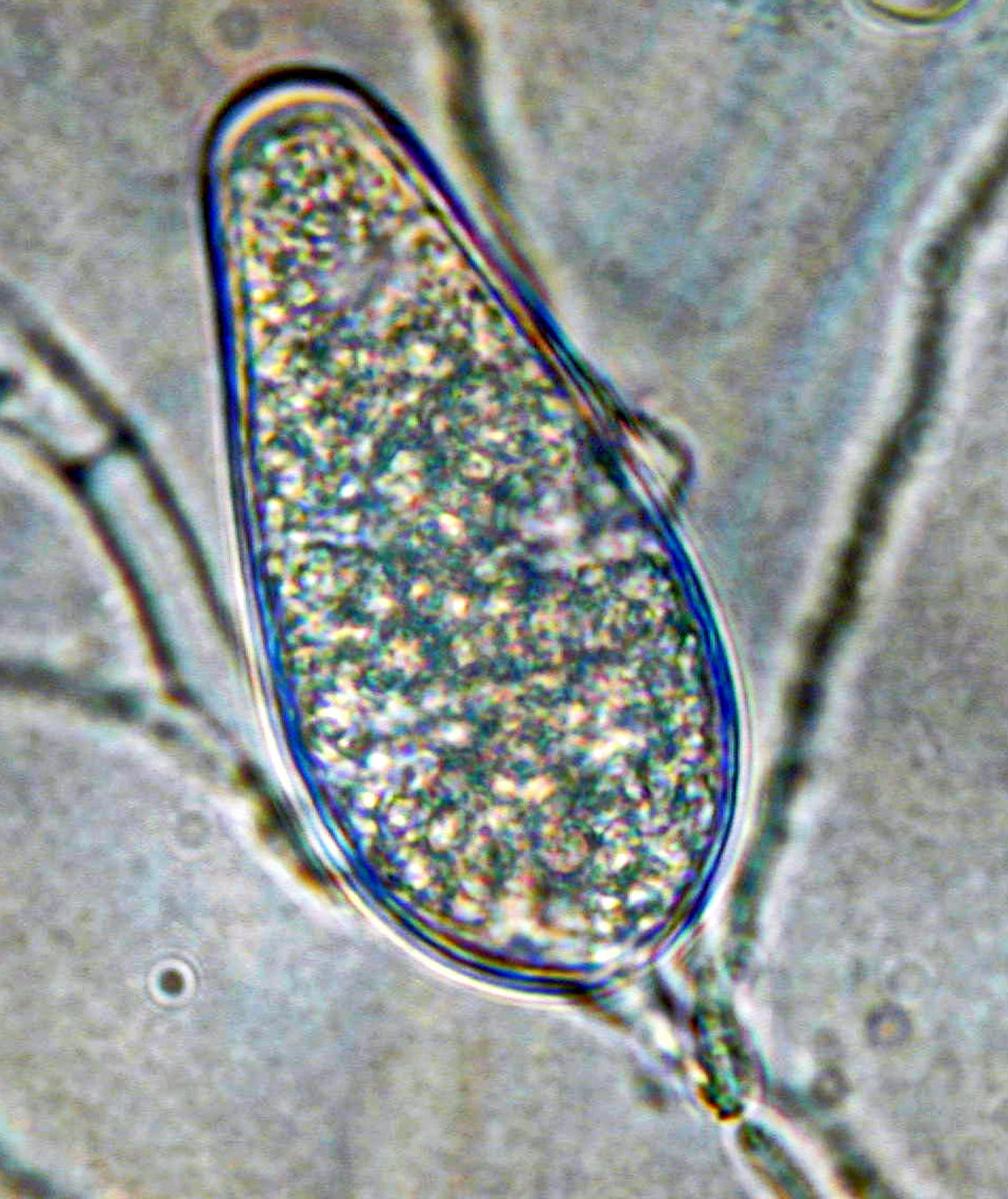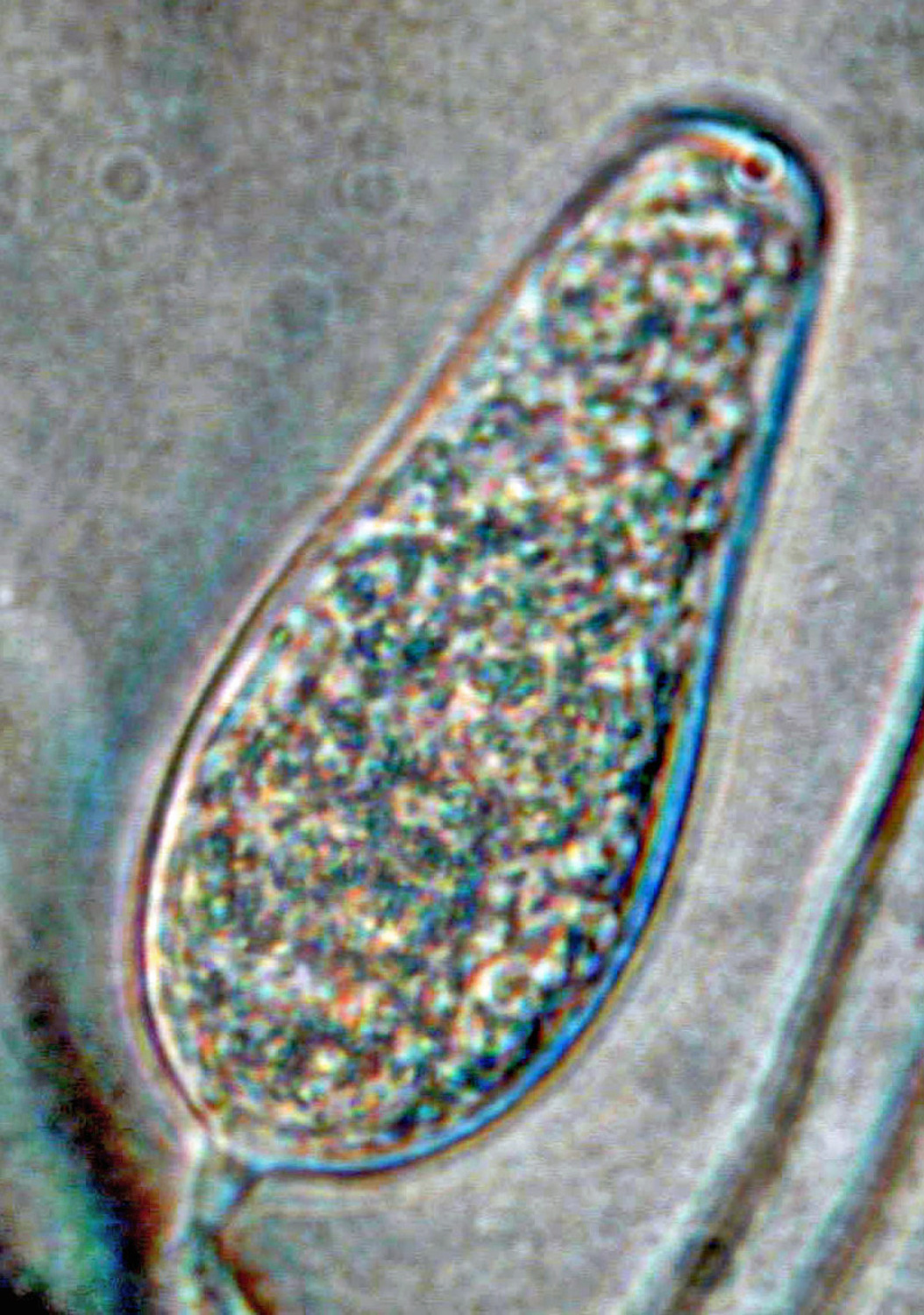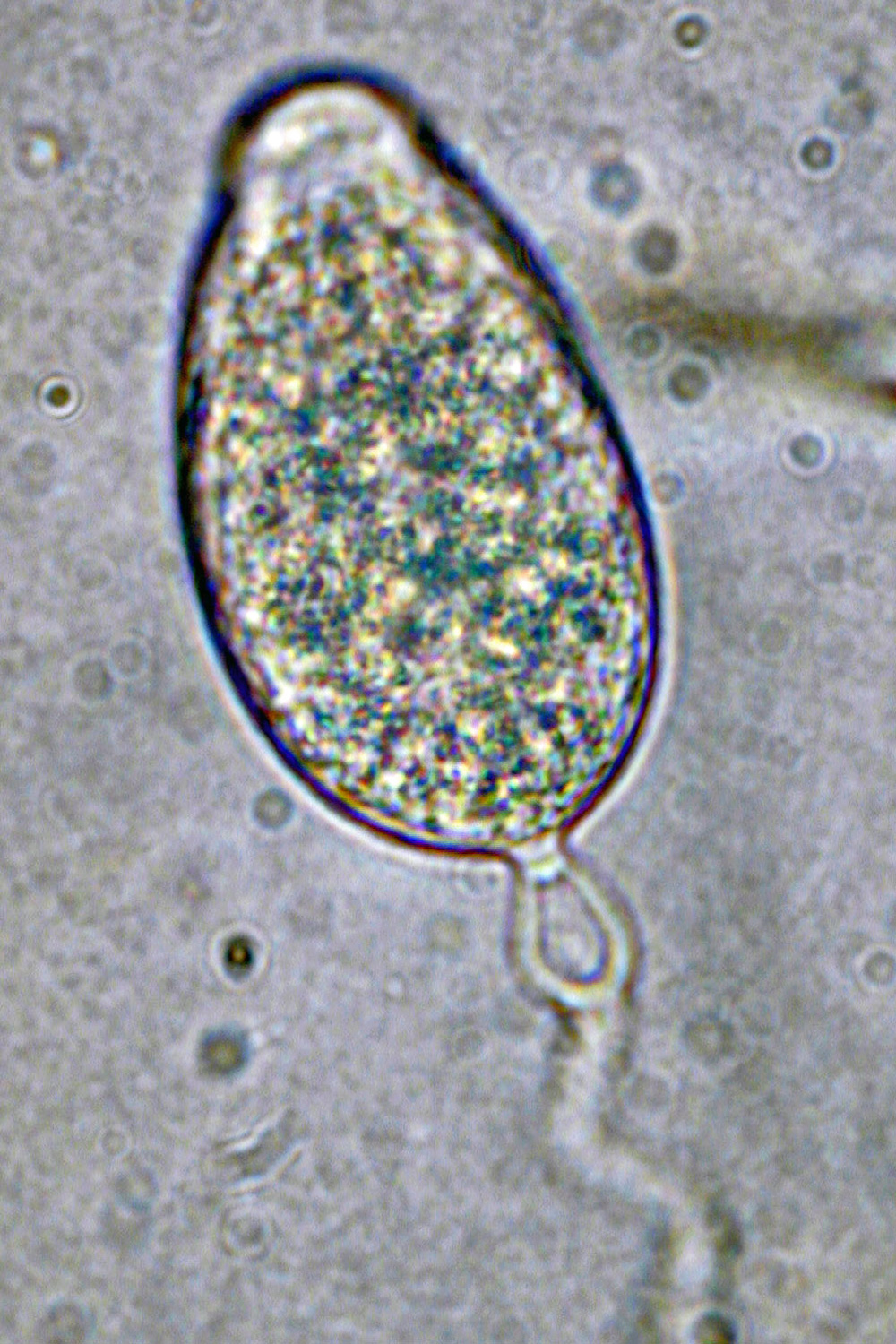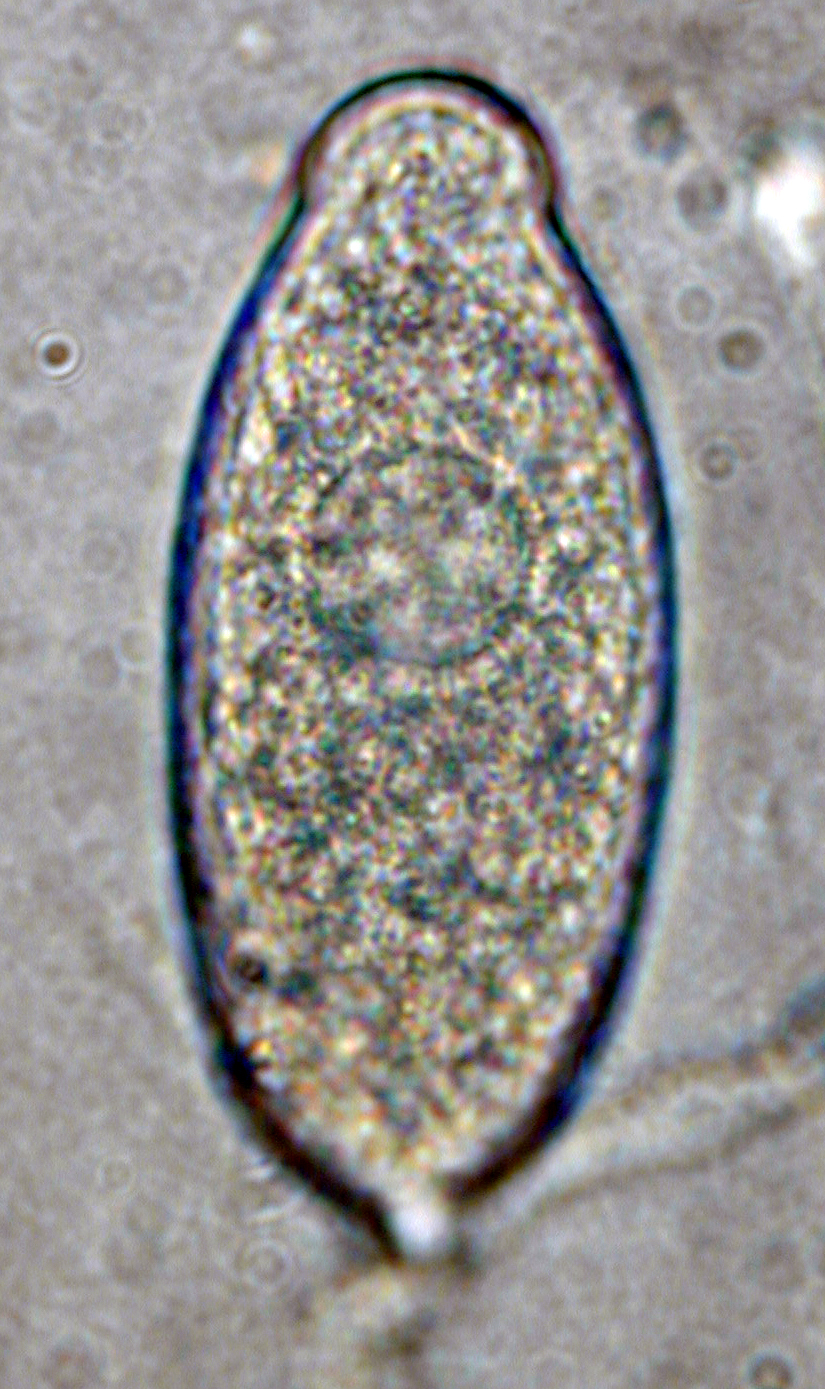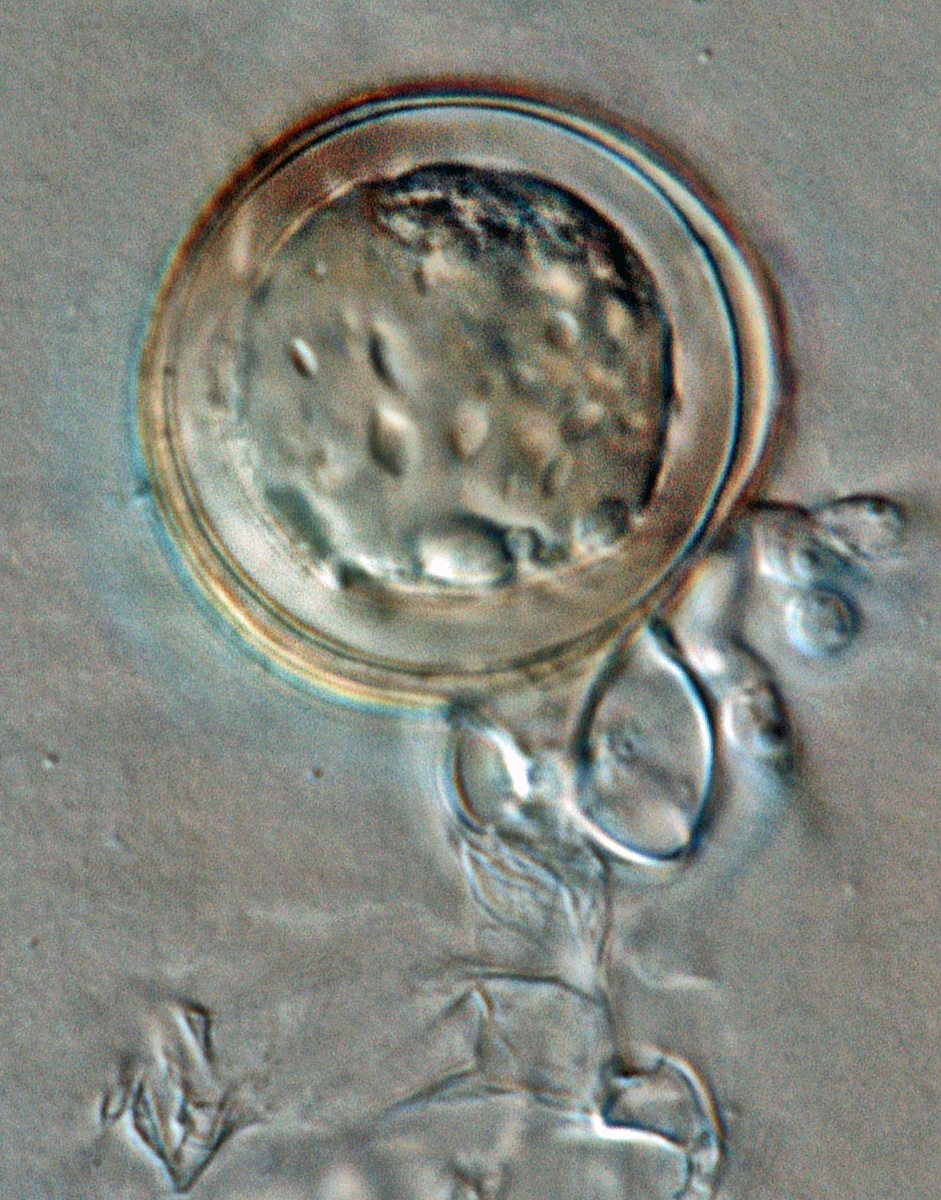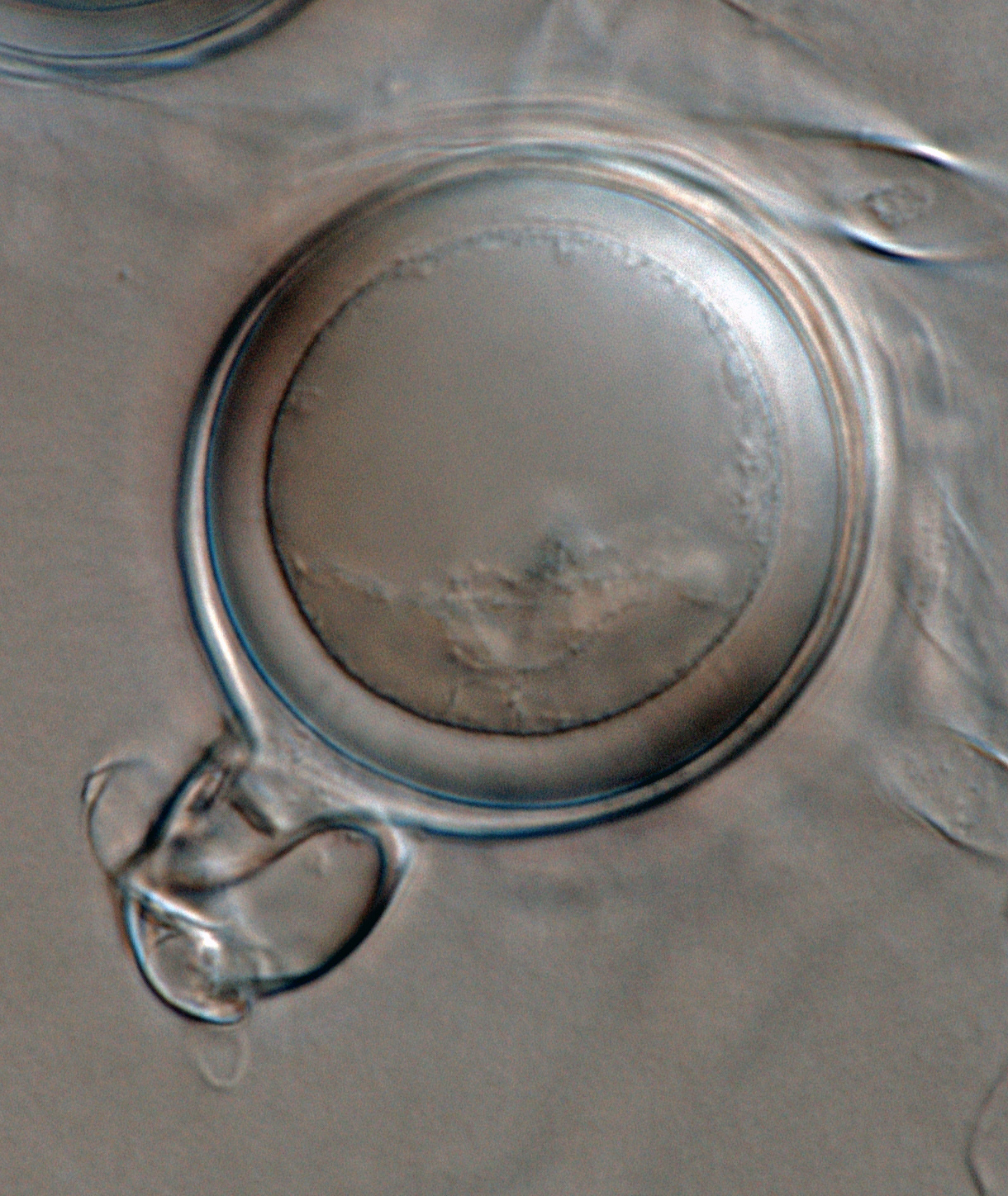Phytophthora niederhauserii
|
Phytophthora spp. in subclade 7b: portion of the seven-loci ML phylogeny featuring the type cultures of 212 described species (by T. Bourret). Notice the position of P. niederhauserii Ex-type CBS 149824 = S&T BL 45. Gloria Abad, USDA S&T.
|
|
Phytophthora spp. in subclade 7b: Morphological Tabular key (PDF) and Tabular key legends (PDF) in IDphy2 KEY SECTION. Notice the data of P. niederhauserii Ex-type CBS 149824 = S&T BL 45. Gloria Abad, USDA S&T.
|
|
Phytophthora niederhauserii (CPHST BL 45) colonies of the ex-type grown for 7 days on (a) V8® Agar, (b) potato dextrose agar, and (c) malt extract agar; photo by Krysta Jennings and Leandra Knight, USDA-APHIS-PPQ |
|
Phytophthora neiderhauserii (ex-type CPHST BL 45) asexual phase: (a) nonpapillate persistent sporangium originated in unbranched sporangiophore and hyphal swellings; (b–g) different shapes of sporangia; (h) lobate hyphal swellings; (i, j) hyphal swellings in sporangiophores; (k) sporangium with internal proliferation; photos by Gloria Abad, USDA-APHIS-PPQ. |
|
Phytophthora niederhauserii (ex-type CPHST BL 45) heterothallic sexual phase: (a–h) smooth-walled oogonia with amphigynous antheridia and plerotic oospores; (c–h) asymmetric amphigynous antheridia; (g) amphigynous antheridia with finger-like projection; photos by Gloria Abad, USDA-APHIS-PPQ. |
|
Phytophthora neiderhauserii (ex-type CPHST BL 45) asexual phase: nonpapillate persistent sporangium originated in unbranched sporangiophore and hyphal swellings; photo by Gloria Abad, USDA-APHIS-PPQ. |
|
Phytophthora neiderhauserii (ex-type CPHST BL 45) asexual phase: nonpapillate persistent sporangium; photo by Gloria Abad, USDA-APHIS-PPQ. |
|
Phytophthora neiderhauserii (ex-type CPHST BL 45) asexual phase: nonpapillate persistent sporangium; photo by Gloria Abad, USDA-APHIS-PPQ. |
|
Phytophthora neiderhauserii (ex-type CPHST BL 45) asexual phase: nonpapillate persistent sporangium; photo by Gloria Abad, USDA-APHIS-PPQ. |
|
Phytophthora neiderhauserii (ex-type CPHST BL 45) asexual phase: nonpapillate persistent sporangium; photo by Gloria Abad, USDA-APHIS-PPQ. |
|
Phytophthora neiderhauserii (ex-type CPHST BL 45) asexual phase: nonpapillate persistent sporangium; photo by Gloria Abad, USDA-APHIS-PPQ. |
|
Phytophthora neiderhauserii (ex-type CPHST BL 45) asexual phase: nonpapillate persistent sporangium; photo by Gloria Abad, USDA-APHIS-PPQ. |
|
Phytophthora neiderhauserii (ex-type CPHST BL 45) asexual phase: nonpapillate persistent sporangium; photo by Gloria Abad, USDA-APHIS-PPQ. |
|
Phytophthora neiderhauserii (ex-type CPHST BL 45) asexual phase: nonpapillate persistent sporangium; photo by Gloria Abad, USDA-APHIS-PPQ. |
|
Phytophthora neiderhauserii (ex-type CPHST BL 45) asexual phase: hyphal swellings in sporangiophores; photo by Gloria Abad, USDA-APHIS-PPQ. |
|
Phytophthora niederhauserii (ex-type CPHST BL 45) heterothallic sexual phase: smooth-walled oogonium with amphigynous antheridium and plerotic oospore; photo by Gloria Abad, USDA-APHIS-PPQ. |
|
Phytophthora niederhauserii (ex-type CPHST BL 45) heterothallic sexual phase: smooth-walled oogonium with asymmetric amphigynous antheridium and plerotic oospore; photo by Gloria Abad, USDA-APHIS-PPQ. |
|
Phytophthora niederhauserii (ex-type CPHST BL 45) heterothallic sexual phase: smooth-walled oogonium with asymmetric amphigynous antheridium and plerotic oospore; photo by Gloria Abad, USDA-APHIS-PPQ. |
|
Phytophthora niederhauserii (ex-type CPHST BL 45) heterothallic sexual phase: smooth-walled oogonium with asymmetric amphigynous antheridium and plerotic oospore; photo by Gloria Abad, USDA-APHIS-PPQ. |
|
Phytophthora niederhauserii (ex-type CPHST BL 45) heterothallic sexual phase: smooth-walled oogonium with asymmetric amphigynous antheridium with finger-like projection and plerotic oospore; photo by Gloria Abad, USDA-APHIS-PPQ. |
|
Phytophthora niederhauserii (ex-type CPHST BL 45) heterothallic sexual phase: smooth-walled oogonium with asymmetric amphigynous antheridium and plerotic oospore; photo by Gloria Abad, USDA-APHIS-PPQ. |
|
Phytophthora niederhauserii (ex-type CPHST BL 45) heterothallic sexual phase: smooth-walled oogonium with asymmetric amphigynous antheridium and plerotic oospore; photo by Gloria Abad, USDA-APHIS-PPQ. |
|
Phytophthora niederhauserii (ex-type CPHST BL 45) heterothallic sexual phase: smooth-walled oogonium with asymmetric amphigynous antheridium and plerotic oospore; photo by Gloria Abad, USDA-APHIS-PPQ. |
Name and publication
Phytophthora niederhauserii Abad & J.A. Abad (2014)
Abad ZG, Abad JA, Cacciola SO, Pane A, Faedda R, Moralejo E, Pérez-Sierra A, Abad-Campos P, Alvarez-Bernaola LA, Bakonyi J, Józsa A, Herrero MA, Burgess TI, Cunnington JH, Smith IW, Balci Y, Blomquist C, Henricot B, Denton G, Spies C, Mcleod A, Belbahri L, Cooke D, Kageyama K, Uematsu S, Kurbetli I, and Degĭrmenci K. 2014. Phytophthora niederhauserii sp. nov., a polyphagous species associated with ornamentals, fruit trees, and native plants in 13 countries. Mycologia 106 (3): 431–447.
Corresponding author: gloria.abad@aphis.usda.gov
Nomenclature
from Abad et al. (2014)
Mycobank
Etymology
named to honor Dr John Niederhauser, winner of the 1990 World Food Prize and best known in the scientific community for his research to control the potato late-blight pathogen Phytophthora infestans (Mont.) de Bary
Typification
Type: UNITED STATES OF AMERICA, collected from English ivy (Hedera helix L.) affected with collar and root rot from a greenhouse in Henderson, North Carolina on 10 Oct 2001, collector Z. Gloria Abad, WPC_P10616 ‘‘preserved in a permanent inactive state,’’ cryopreserved in liquid nitrogen at the World Oomycetes/Phytophthora Genetic Resource Collection, Univ. of California
Ex-type: P10616 (WPC) = Ph289 and PPIL 01.6056
Sequences for ex-type in original manuscript: PPIL 01.6056 = ITS AY550915. P10616 (WPC) = β-tub EU080230, EF-1α EU080231
Ex-type in other collections
(ET) CBS 149824, NRRL 64258, WPC P10616, S&T BL 45 (Abad), Ph289 (Abad), PPIL 01.6056 (Abad)
Molecular identification
Voucher sequences for barcoding genes (ITS rDNA and COI) of the ex-type (see Molecular protocols page)
Phytophthora niederhauserii isolate CPHST BL 45 (= P10616 WPC) = ITS rDNA MG865552, COI MH136944
Voucher sequences for Molecular Toolbox with seven genes (ITS, β-tub, COI, EF1α, HSP90, L10, and YPT1
(see Molecular protocols page) (In Progress)
Voucher sequences for Metabarcoding High-throughput Sequencing (HTS) Technologies [Molecular Operational Taxonomic Unit (MOTU)]
(see Molecular protocols page) (In Progress)
Sequences with multiple genes for ex-type in other sources
- NCBI: Phytophthora niederhauserii CPHST BL 45
- NCBI: Phytophthora niederhauserii P10616
- EPPO-Q-bank: Phytophthora niederhauserii
- BOLDSYSTEMS: Phytophthora niederhauserii (barcoding COI & ITS)
Position in multigenic phylogeny with 7 genes (ITS, β-tub, COI, EF1α, HSP90, L10, and YPT1)
Clade clade:
a taxonomic group of organisms classified together on the basis of homologous features traced to a common ancestor
7b
Morphological identification
Colonies and cardinal temperatures
Colony colony:
assemblage of hyphae which usually develops form a single source and grows in a coordinated way
morphology on V-8 agar and potato dextrose agar with no distinct pattern, on malt extract agar with compressed myceliamycelia:
mass of hyphae constituting the body, or thallus, of fungi and oomycetes; in <em>Phytophthora</em> species, mycelia is coenocytic
. Minimum temperature for growth 10°C, optimum 30°C, maximum 37°C.
Conditions for growth and sporulation
Sporangia and hyphal swellings readily produced in media and liquid cultures; oosporesoospores:
zygote or thick-walled spore that forms within the oogonium after fertilization by the antheridium; may be long-lived
were produced in pairings with Phytophthora cryptogea A2.
Asexual phase
SporangiaSporangia:
sac within which zoospores form, especially when water is cooled to about 10°C below ambient temperature; in solid substrates, sporangia usually germinate by germ tubes
nonpapillatenonpapillate:
pertaining to the production of a non-distinct, or inconspicuous, papilla at the distal end of the sporangium (cf. papillate and semipapillate)
; persistentpersistent:
pertaining to sporangia that remain attached to the sporangiophore and do not separate or detach easily (cf. caducous)
; ellipsoidellipsoid:
refers to a solid body that forms an ellipse in the longitudinal plane and a circle in cross section; many fungal spores are ellipsoidal or elliptic
, obpyriformobpyriform:
inversely pear-shaped, i.e. with the widest part at the point of attachment (cf. pyriform)
, ovoidovoid:
egg-shaped, with the widest part at the base of the sporangium and the narrow part at the apex
, or irregular (56–112 L x 32–52 W µm), proliferating internally with both nested and extended proliferationextended proliferation:
a type of internal proliferation in which the sporangiophore originates from inside of an empty sporangium, and continues to grow through and out of the old sporangium
; sporangiasporangia:
sac within which zoospores form, especially when water is cooled to about 10°C below ambient temperature; in solid substrates, sporangia usually germinate by germ tubes
originated in single or simple sympodial or rarely branched sporangiophores. Hyphal swellings toruloidtoruloid:
having swellings at intervals
to lobate and irregularly branched. Chlamydospores absent.
Sexual phase
Heterothallic. OogoniaOogonia:
the female gametangium in which the oospore forms after fertilization by the antheridium
spherical (24–40 µm diam.), some with funnel shape or long bases; antheridiaantheridia:
the male gametangium; a multinucleate, swollen hyphal tip affixed firmly to the wall of the female gametangium (the oogonium)
amphigynousamphigynous:
pertaining to the sexual stage in which the antheridium completely surrounds the stalk of the oogonium (cf. paragynous)
, some with lobes that are frequently asymmetrical around the oogoniaoogonia:
the female gametangium in which the oospore forms after fertilization by the antheridium
stalk (giving the appearance of being paragynousparagynous:
pertaining to the sexual stage in which the antheridium is attached to the side of the oogonium (cf. amphigynous)
), some elongated; oospores plerotic plerotic:
pertaining to an oospore that fills the oogonium (cf. aplerotic)
or slightly apleroticaplerotic:
pertaining to a mature oospore that does not fill the oogonium; i.e. there is room left between the oospore wall and oogonium wall (cf. plerotic)
(25–38 µm diam.).
Most typical characters
Phytophthora niederhauserii is characterized by typical toruloidtoruloid:
having swellings at intervals
hyphal swellings and the shape of the ellipsoidellipsoid:
refers to a solid body that forms an ellipse in the longitudinal plane and a circle in cross section; many fungal spores are ellipsoidal or elliptic
sporangia.
Specimen(s) evaluated
Phytophthora niederhauserii ex-type CPHST BL 45, duplicate of ex-type P10616 (World Phytophthora Collection)
Hosts and distribution
Distribution: widespread
Substrate: all plant parts
Disease note: rots, chlorosis, wilting, cankers, leaf blight, etc.
Host: numerous hosts, but especially Hedera helix (Araliaceae) and Cistus salvifolius (Cistaceae)
Retrieved January 31, 2018 from U.S. National Fungus Collections Nomenclature Database.
Additional references and links
- SMML USDA-ARS: Phytophthora niederhauserii
- EPPO Global Database: Phytophthora niederhauserii
- Forest Phytophthoras of the World: Phytophthora niederhauserii
- CABI Digital Library: Phytophthora niederhauserii
- Encyclopedia of Life (EOL): Phytophthora niederhauserii
- Index Fungorum (IF): Phytophthora niederhauserii
- Google All Phytophthora niederhauserii
- Google Images Phytophthora niederhauserii
- Google Scholar Phytophthora niederhauserii
Fact sheet author
Z. Gloria Abad, Ph.D., USDA-APHIS-PPQ-S&T Plant Pathogen Confirmatory Diagnostics Laboratory (PPCDL), United States of America.


